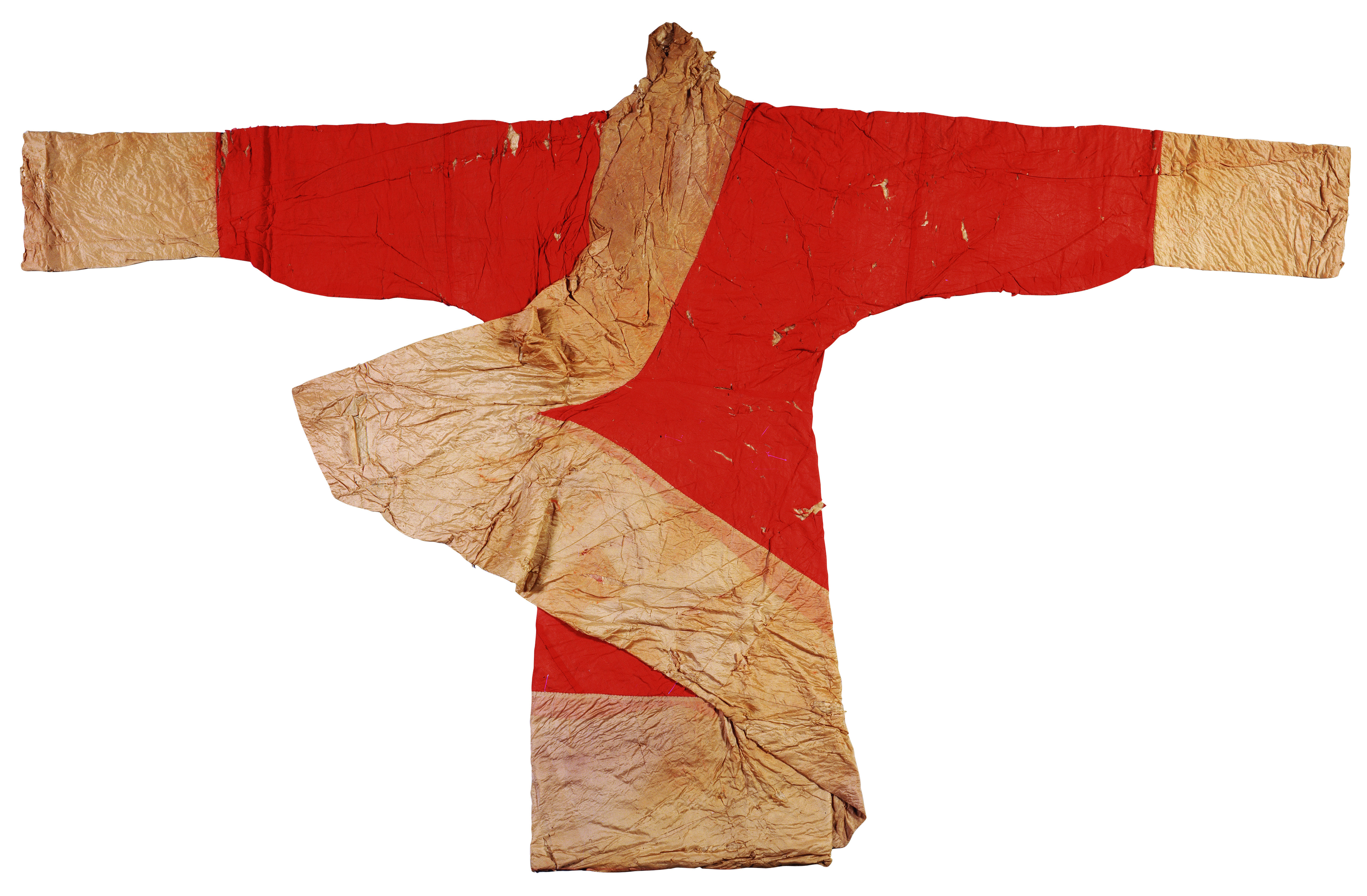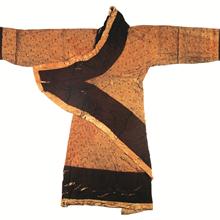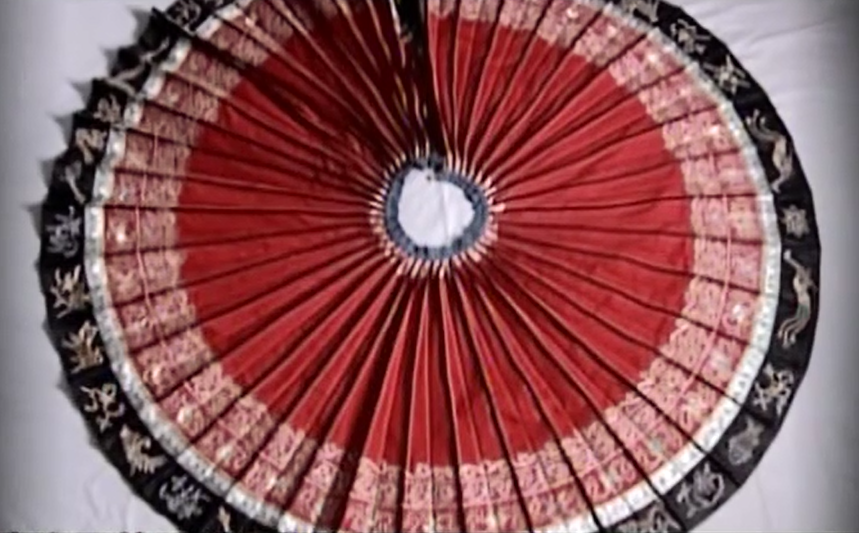Dimensions: Length of the gown: 140cm; overall Length of the sleeves: 245cm; width at waist: 52cm
Origin: Excavated from Han Tomb No.1, Mawangdui, Changsha City, Hunan Province,1972
This vermillion gown with lozenge pattern has its upper and lower parts undivided, with a crossed collar and a flap extending diagonally from left to right. Such was the popular fashion among noble ladies in the early Western Han Dynasty. Vermillion damask with lozenge patterns is a monochrome silk fabric with faint pattern, woven with two warps twisted together to create very obvious square pores. Such square pores are rather stable, not easy to slip. Some experts even consider damask to be real thin silk and the so-called tabby thin silk as “imitation thin silk”.
Seen from the point of weaving technique, vermillion damask with lozenge pattern demands extremely complicated technology. One single repeating unit requires over 330 warps and 200 wefts. Among the warps, the number of ground warps and pattern warps are the same and they are arranged in the same fashion as well. More than 80 ground warps are symmetrical to each other and need over 40 drawing motions while the other more than 80 warps are asymmetrical and need over 120 independent drawing motions to control. The twisting of warps is controlled universally by the warp-twisting heddles. Half of the wefts also experience the warp-twisting motion, controlled by treadles. It is estimated that such overcomplicated process needs the cooperation between the jacquard heddle device and the warp-twisting device. Therefore, two persons are needed to produce such damask with clear pores and exquisite patterns, with one person responsible for warp-twisting, the lower heddle treadle and the throwing of the shuttle and the other person for the pattern. The lozenge in this damask is named “seven-color cup pattern damask”, so damask with lozenge pattern is also called damask with cup pattern.






